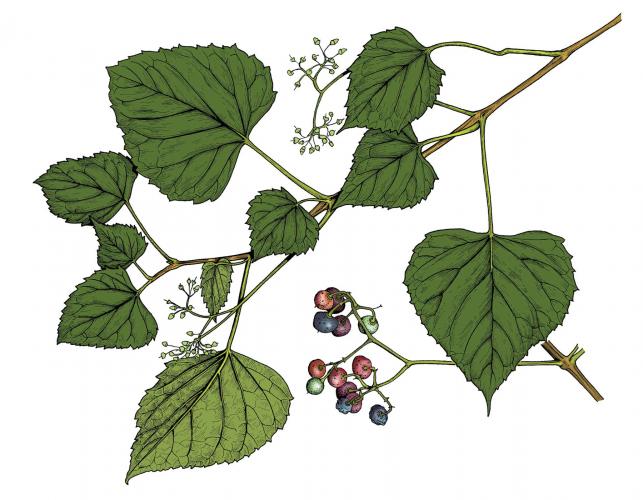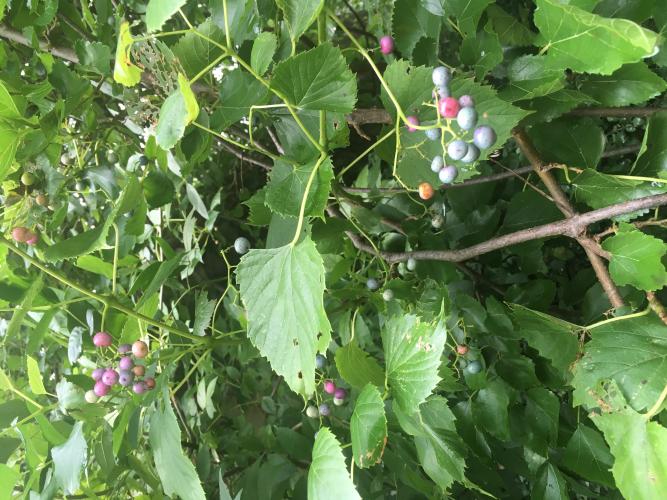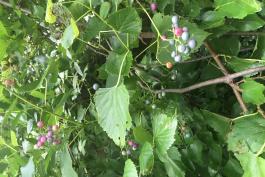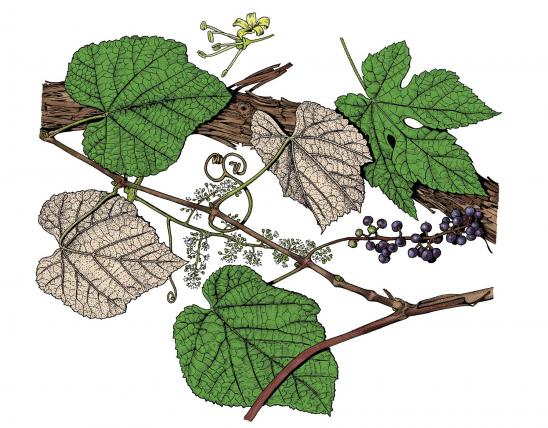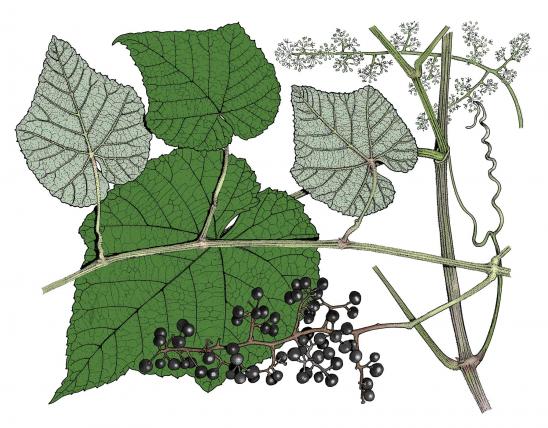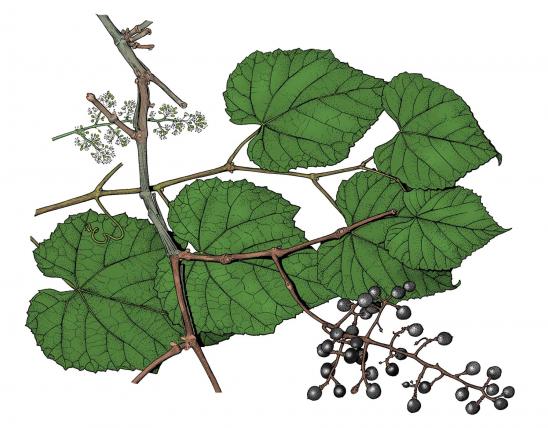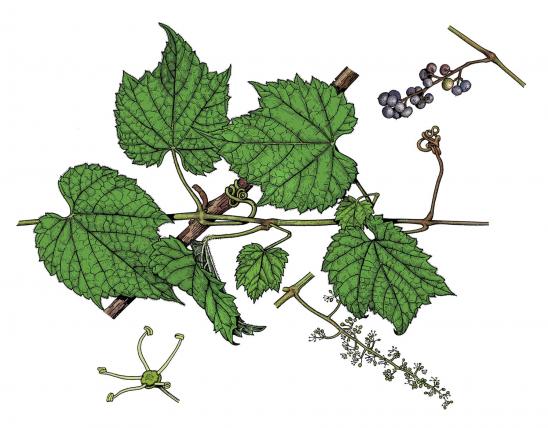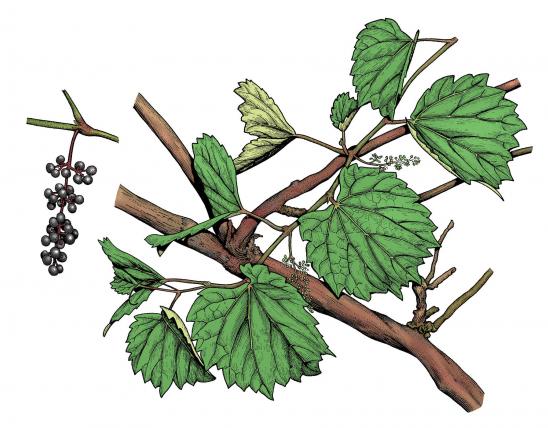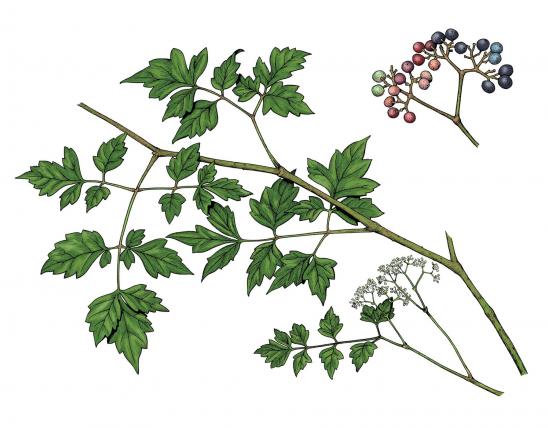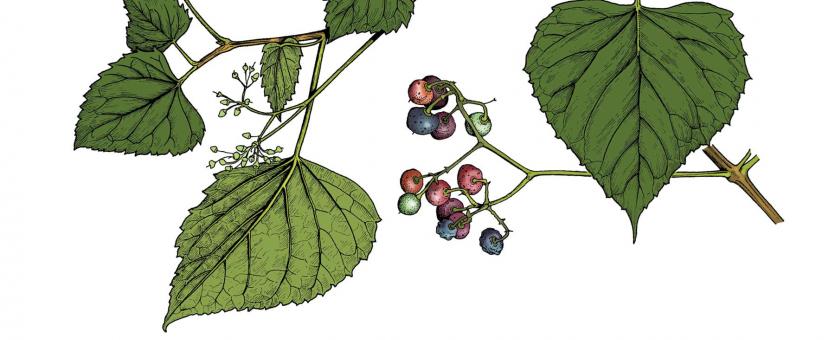
Raccoon grape is a woody vine climbing by tendrils to a length of 60 feet. The most aggressive native vine in the state, it can smother small- to medium-sized trees.
Leaves are alternate, simple, 2–5 inches long, 2½–4½ inches wide, broadly egg-shaped, base flattened; margins coarsely toothed; upper surface olive-green, rather dull, smooth; lower surface paler, smooth or with a few scattered white hairs, especially on the veins.
Stems, when young, are green, flexible, slightly angular, with ridges extending along the stem from the leaf bases, smooth; older stems gray to light brown, with numerous oval, warty pores; tendrils arise at some nodes, each opposite a leaf, stout, forked at the end. Stems often die back in winter. Bark on older stems is tight, dark brown, deeply grooved, with long ridges that are flat-topped and netted. The pith is white (it is brown in “true” grapes, genus Vitis).
Flowering is in May–July. Flowers greenish, small, in flat-topped loose clusters; petals 5.
Fruit matures in August–November. Fruiting clusters are much broader than long. Fruit ¼ inch across, globe-shaped, changing color as they develop from green to orange to rose-purple and finally to turquoise blue. Fruit not edible. Seeds 1–3 per berry.
Similar species: The closely related peppervine (A. arborea) has leaves that are twice pinnately (feather) compound, or pinnately then ternately (three-times) compound, while raccoon grape’s leaves are either unlobed or palmately 3- or 5-lobed. Raccoon grape might be more easily confused with some of our Vitis species, but its white pith, fewer tendrils, and tight bark help to separate it from them. Also, raccoon grape’s leaves are triangular, while those of Vitis grapes are usually more heart-shaped.
Stems of older plants can reach 65 feet in length.
Occurs scattered in the southern two-thirds of the state and locally northward along the Missouri and Mississippi rivers.
Habitat and Conservation
Occurs in rich alluvial (river-deposited) bottomland soils in valleys, low woods, and slopes near streams, borders of streams, oxbow lakes, lowland thickets, borders of low woods, and fencerows. This vine is fast-growing and can sometimes be seen forming dense matted thickets. It also can pull down small trees from its weight and compete with canopy trees for sunlight.
Human Connections
The thin-fleshed fruits are not palatable to humans. The stems are sometimes used in basketry and other handcrafts. Because of its aggressive growth and ability to overwhelm trees, it is not recommend for growing as an ornamental. However, woodsy kids have been known to swing Tarzan-like from large grapevines that are firmly connected at the top. (Remember, of course, not to confuse grapevines with poison ivy.)
Ecosystem Connections
Humans may not relish the flavor of the fruit, but the berries are eaten by birds and small mammals. Birds that eat it include northern cardinal, northern bobwhite, yellow-shafted flicker, brown thrasher, and wood thrush. Undoubtedly raccoons eat the berries, too. Several species of sphinx moths use grape-family species as larval food plants.
